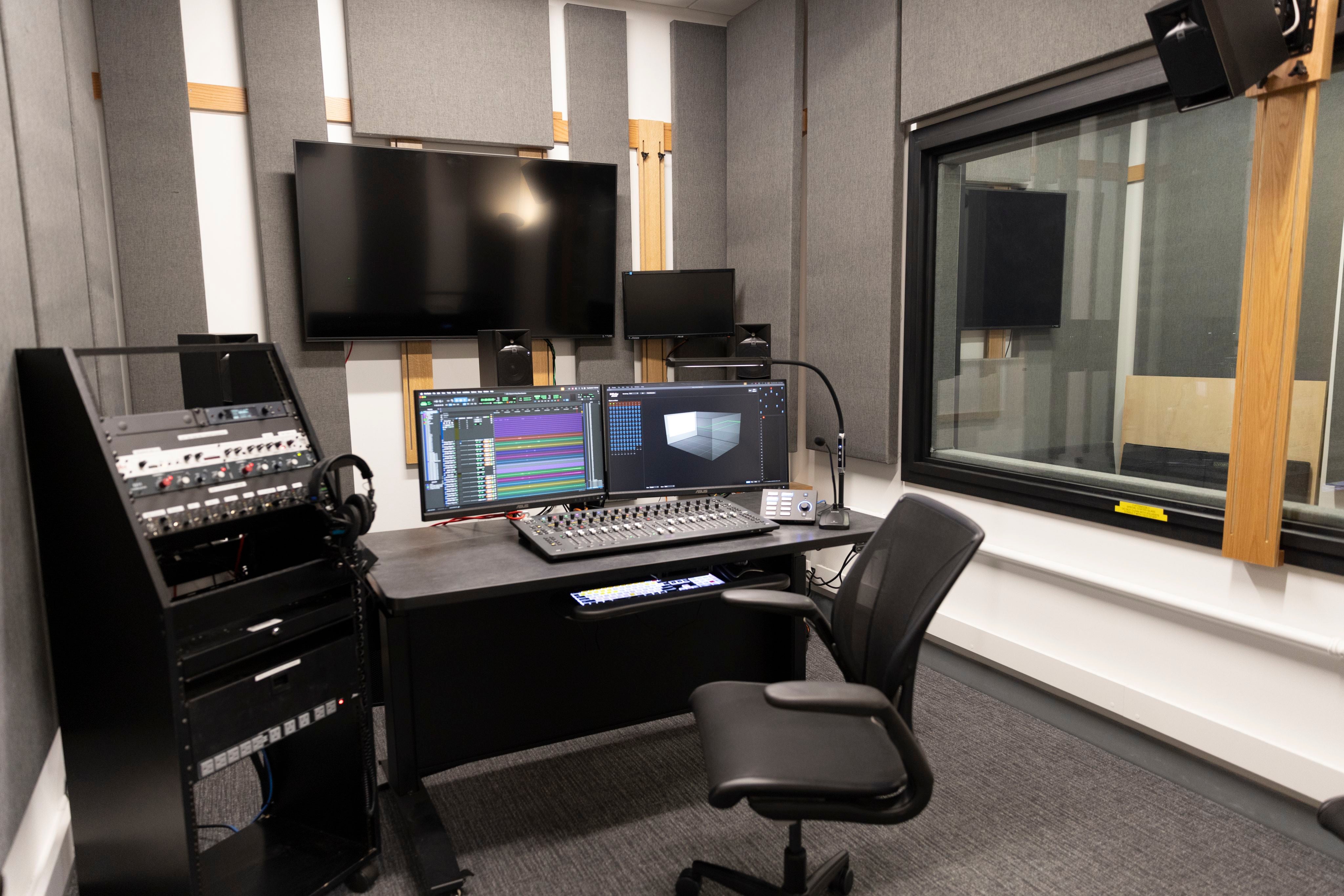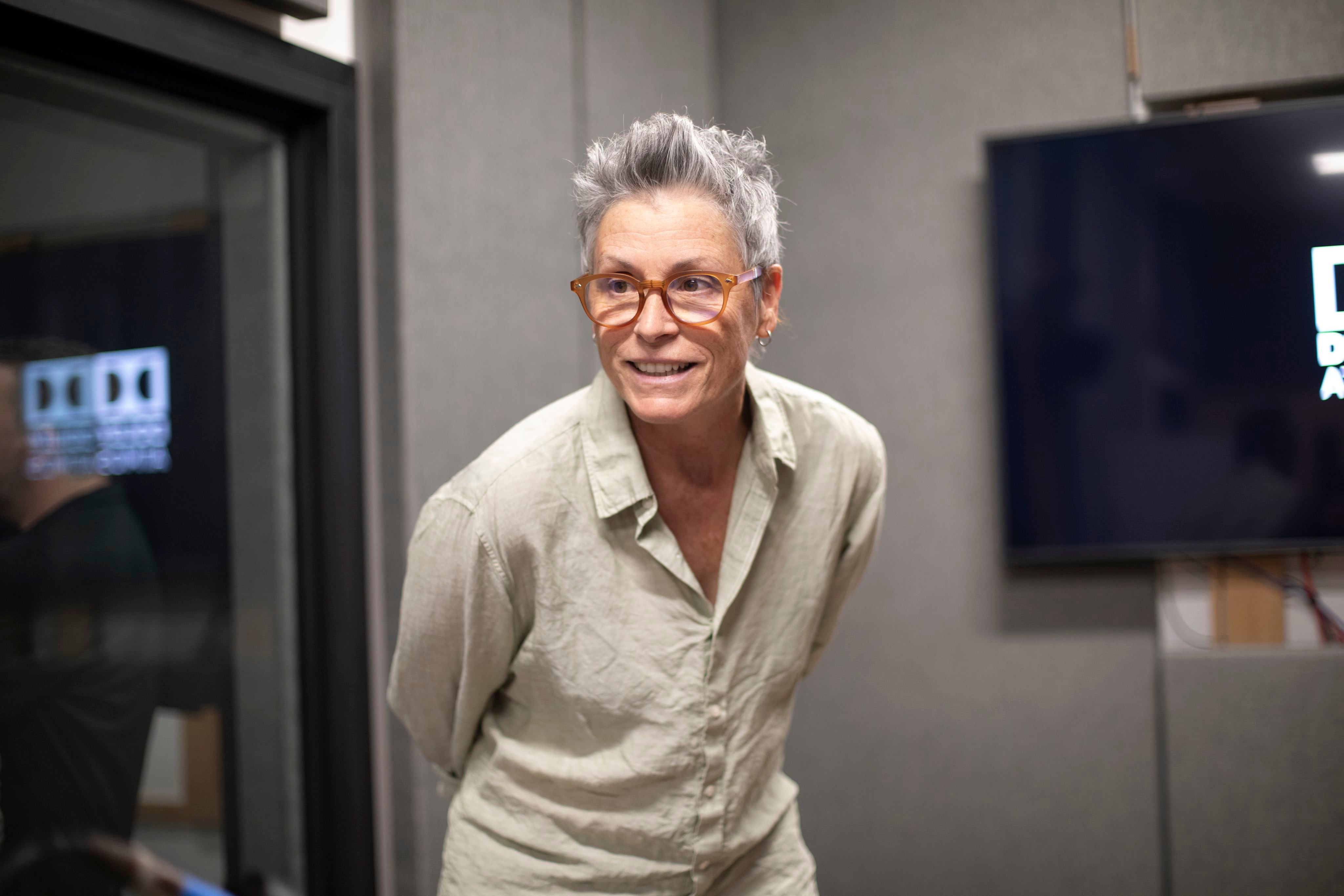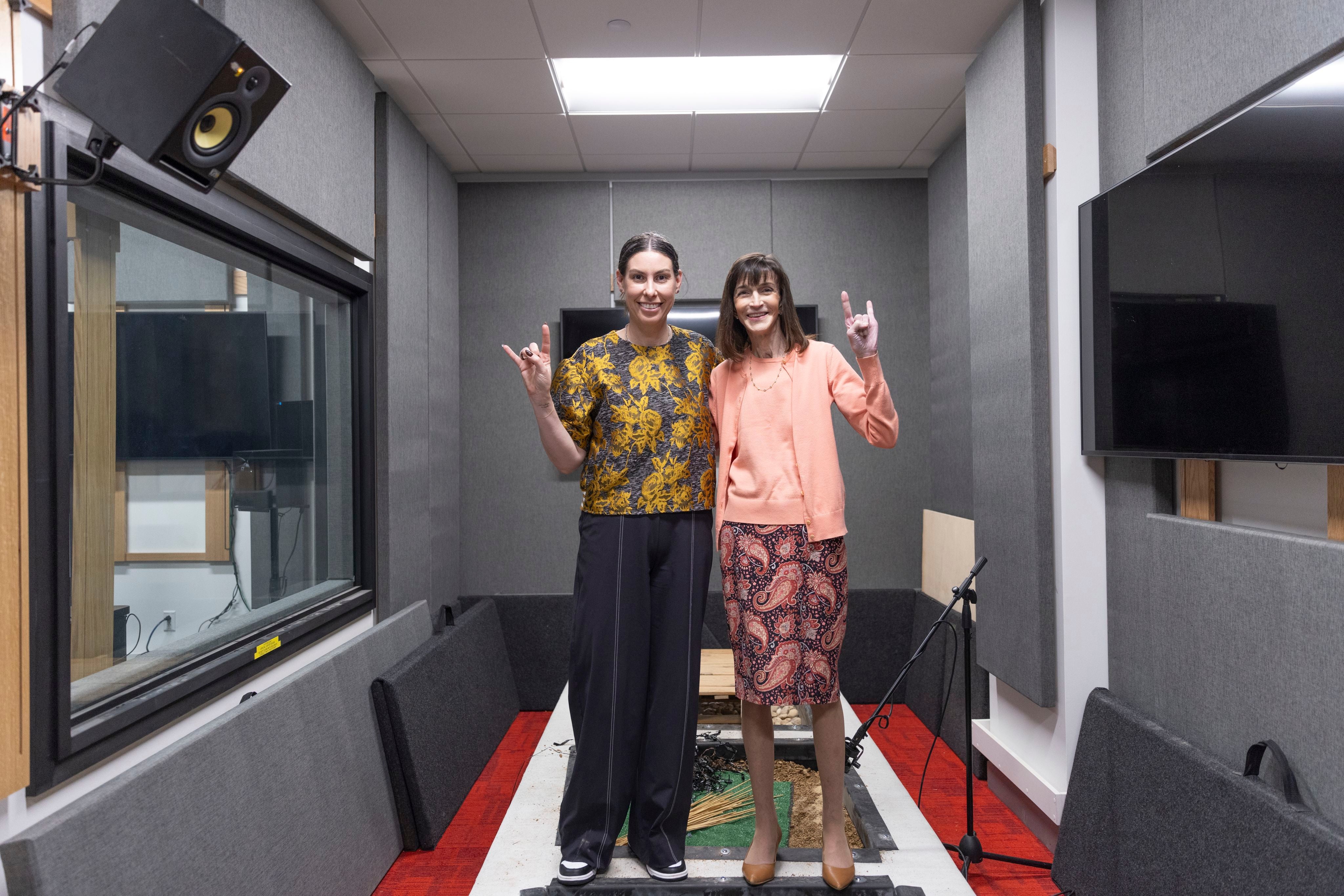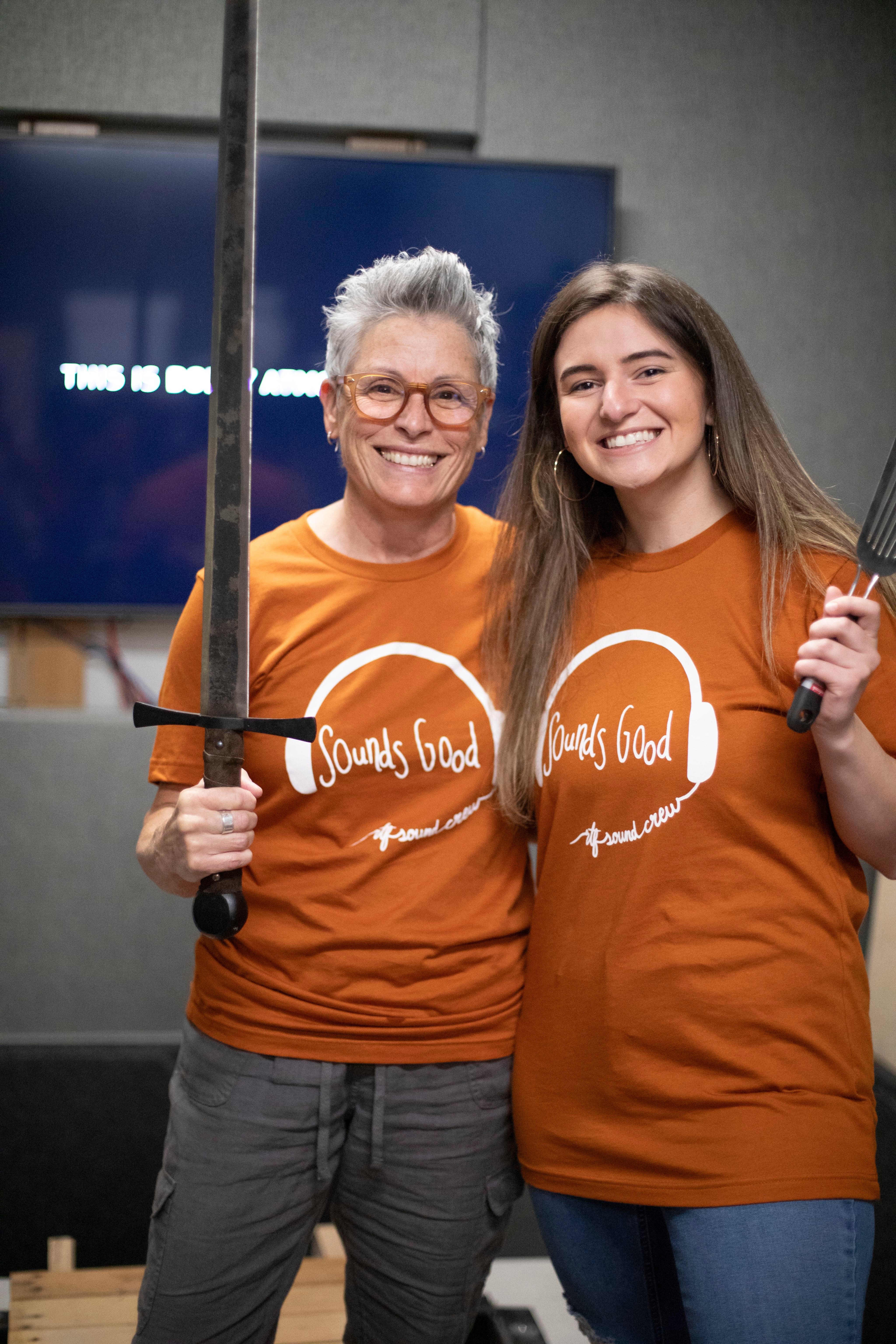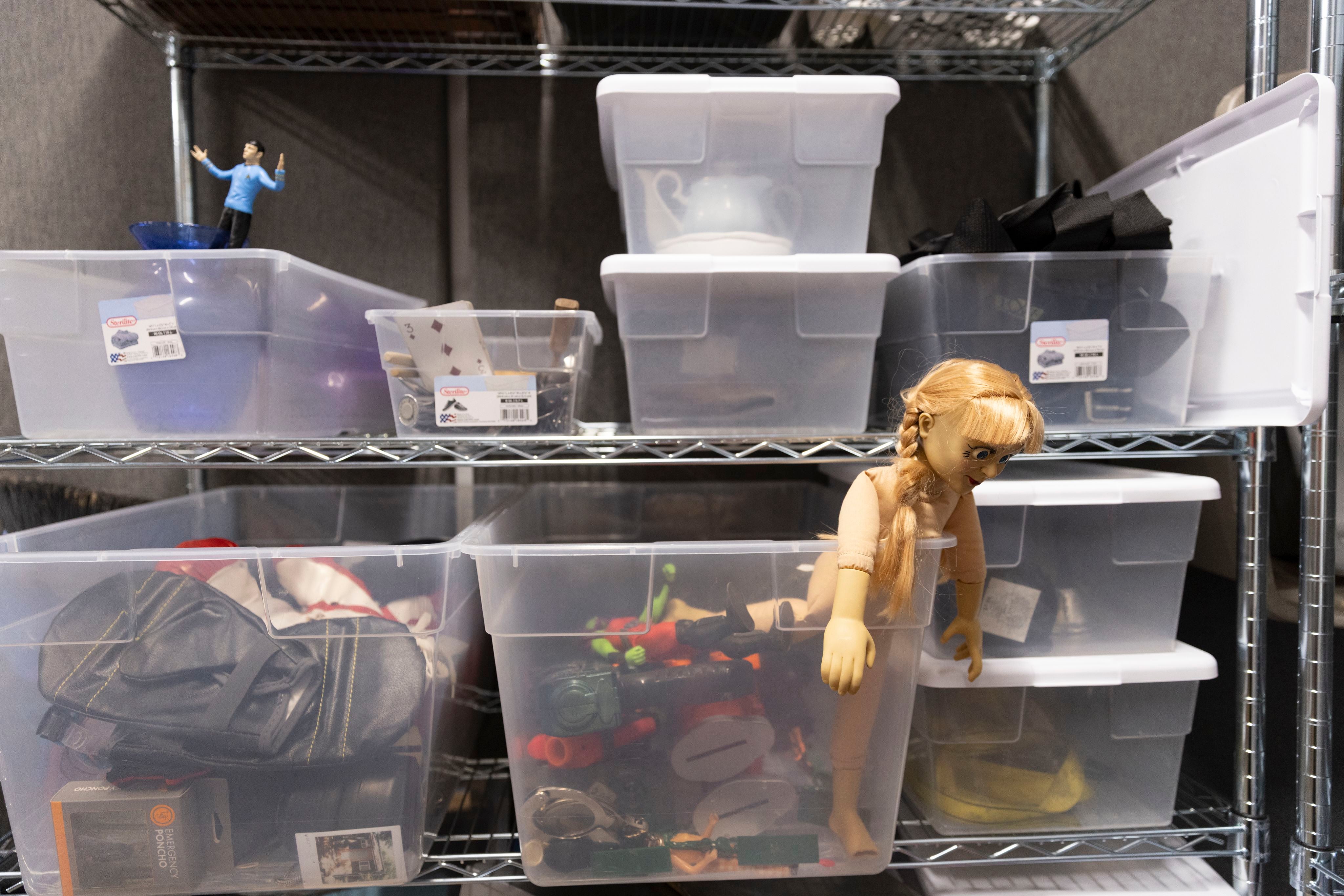Sound takes center stage
Sound takes center stage
Moody College unveils new Foley stage and mixing studio for Hollywood quality audio

At The University of Texas at Austin’s Moody College of Communication, the sounds of metal clanking, footsteps crunching across sand and movie theater-level sound effects trickle down the hallway of Communication Building B.
The sounds, produced by students, are what are known in films and television as “Foley,” named after sound-effects artist Jack Foley, and are added after filming to enhance audio quality, mimicking a character’s footsteps or a sword fight or any sounds they would make as they interact with the world.
Moody College radio-television-film students can now learn this art using a new Foley stage and Dolby Atmos Mix Suite unveiled this fall. The space gives them the chance to dive into post-production sound during their time in college, opening up a world of possibilities to work in audio after graduation.
“This is so great to have here at UT because now our students can do what people are doing on big Hollywood films,” said Korey Pereira, Emmy-award winning sound editor and the area head for audio in the radio-television-film department.
“As a storyteller, how do you make your audience care about what they’re seeing? You have to make them feel for the person on the screen in the moment. And quality sound really achieves that.”

The Foley stage is equipped with three pits filled with sand, rocks and a wooden platform, as well as an arsenal of props in a sound-proof studio that allows students to become the actor, following along with the action on screen to bring a scene to life.
“As a storyteller, how do you make your audience care about what they’re seeing?” Pereira said. “You have to make them feel for the person on the screen in the moment. And quality sound really achieves that.”
The Foley sounds are recorded in a control room next door to the Foley stage, where students can also learn how to mix sounds in Dolby Atmos, an incredibly high-quality surround sound technology.
Dolby Atmos is an "object-based" audio format, which means filmmakers can precisely move sounds around a room. It also adds height channels, so things like rain or a helicopter sound like they are actually coming from above the audience’s heads. It allows creators to tell stories in a whole new way.
“Dolby Atmos is very much hitting a point where it’s becoming the standard format,” Pereira said. “Netflix, Amazon Prime, Apple TV and a lot of theatrical releases are now doing Atmos mixes. It’s the cutting-edge format that’s really catching on to a point where I think it’s important that we’re able to teach that to our students.”
Moody College has plans to unveil a second editing suite in December so students can have two audio mixes running at once. It will also support Dolby Atmos.

Moody College's new Foley stage was designed with help from Susan Fitz-Simon, a radio-television-film lecturer and professional Foley artist at Soundcrafter, an Austin-based post-production sound company. Fitz-Simon has been dreaming of a space like this for students for 17 years. She has a life-long passion for the art of post-production sound, having grown up making sound effects for a make-believe radio show with her cousin as a child. She believes that Foley is a fundamental part of film.
“If you watch films without any kind of Foley or sound effects, you’d be shocked,” Fitz-Simon said. “I always say that a lot of films or TV sound like a home movie without it. There’s nothing there. Post audio brings a film to the next level.”
Susan Fitz-Simon is a radio-television-film lecturer and professional Foley artist at Soundcrafter, an Austin-based post-production sound company.
Susan Fitz-Simon is a radio-television-film lecturer and professional Foley artist at Soundcrafter, an Austin-based post-production sound company.
Even after 26 years in the industry, Fitz-Simon still lights up telling her friends how a pizza cutter is perfect for replicating the sound of spurs or discussing the musicality of full body falls.
Moody College students got a first-hand look at the life of a Foley artist at an open house the department hosted in October. Fitz-Simon and her colleague, Jahné Zachary, shared tips and tricks while demonstrating how a $45 broad sword from Amazon and a fish spatula help them to match sounds effects to a sword fight scene in “The Princess Bride.”
Students crowded along the edge of the Foley stage while Pereira cued up a dance sequence in Netflix’s “Wednesday,” for the pair to choreograph. The room was silent except for the sound of Fitz-Simon’s penny loafers scraping against the concrete floor. Then, they turned the makeshift dance floor over to students to try their hand — or foot — at Foley for the first time.

Alyssa Young, a radio-television-film senior, was called up first, focusing intently on the screen to try and match each of her footsteps with Jenna Ortega’s, the show’s star.
“I love that Korey coordinated all of this in getting this space built and letting students actually be able to use it,” Young said. “I’m really excited.”
The open house was just a preview for the rest of the work students will be able to do on the stage. Students in Pereira’s Sound Design and Mixing class will have access to this space for their projects or to record Foley for another professor’s short film before it’s edited using the Dolby Atmos Mix Suite.
Glenn Eanes, a radio-television-film alumnus who graduated in 2008, remembers there only being a handful of people in the department who were interested in sound while he was at Moody College, something that the department has worked to change. Eanes now works in post-production sound and thinks that the way the college has expanded its audio production offerings is fantastic for students.
“For the most part, you can pick up skills on the job, but you have to have time sitting with the equipment,” Eanes said. “Time in the seat is probably the most important thing, and the earlier you can start that, the better. Having the proper facilities to do that is a big help for students at UT.”
Giving students the opportunity to work on a professional quality Foley stage has been a dream for Pereira since he was an undergrad at UT. Now, he hopes that these resources will help students get the real-world experience they need.
“I think if you look at Moody, in the bigger picture, we’re about excellence,” Pereira said. “All the facilities you go into, the classrooms, the labs, you come into this space, you feel like it’s something special. It’s really intentionally built, and we are excited to offer that.”


